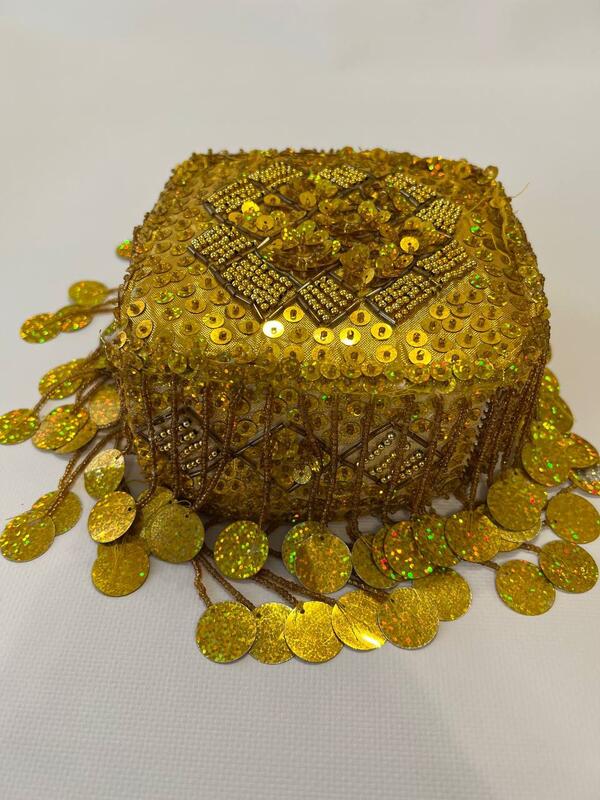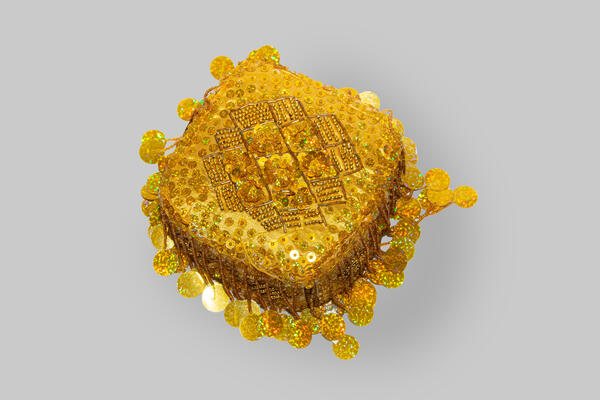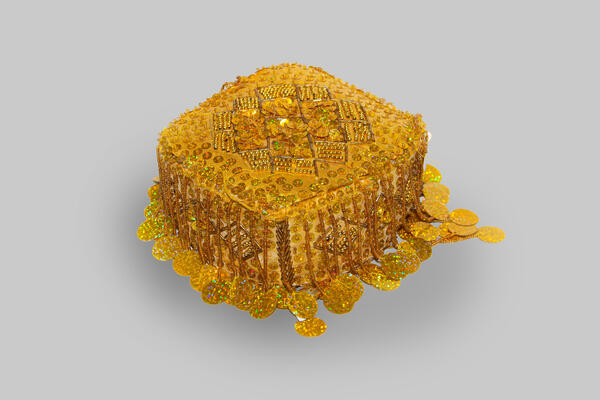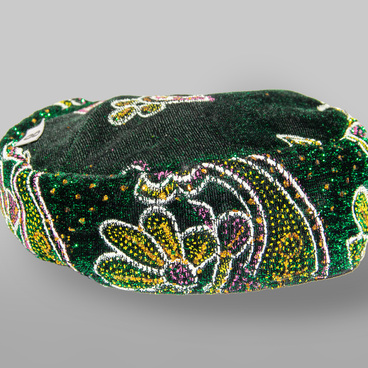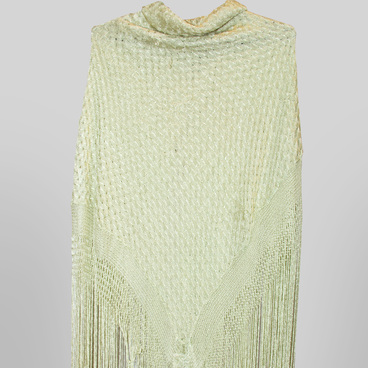The origin of name “tubeteika” is connected with the Turkic word “tyube”, meaning “top”. According to one version, the ancient Turkic felt balaclava of a combat helmet is considered the prototype of the tubeteika. The most common type was a sphero-conical hat sewn from four wedge-shaped pieces. Warriors wore such quilted caps to avoid contact with the metal helmet.
Gradually, the cap spread as an everyday and festive headdress among all classes of the male population. From the middle of the 19th century to the early 20th century, Tatars had two types of tubeteikas: takyya (with a hemispherical shape) and kalyapush (in the shape of a truncated cone). Tubeteikas of both types were worn by men of all ages and all territorial groups, with the exception of the Kryashens (baptized Tatars). According to researchers, the first type is the earliest. Such a tubeteika, along with other clothes, was included in the bride’s dowry. Congratulating a young man on a legal marriage, people would say: “Takyyan kotly bulsyn!” (“May the takyya bring you happiness”). The second version of the tubeteika — the kalyapush — became widespread only in the late 19th — early 20th century, first among the male population of Kazan and beyond, and then among other territorial groups of the people.
Tatars used the word “kalyapush” for the tubeteika. Kalyapush comes from Farsi: “kala” means “head”, “pushidan” — “covering”, which means “cover your head before prayer.” A kalyapush was the favorite headdress of the intelligentsia and clerks — there are many photographs confirming this fact. This type of the tubeteika has a flat top and a solid rim. It was sewn almost exclusively from velvet, embroidered with silk, gold or silver threads, and later with pearls and beads. A kalyapush looked unassuming and at the same time festive and elegant.
The museum exhibition includes a kalyapush, which was worn on holidays or during wedding celebrations. This square women’s headdress is sewn from a shiny yellow brocade fabric. The tubeteika is decorated with embroidery, glass beads, and numerous sequins.
The tubeteika was donated to the museum by Nurzia Sirachetdinova, a resident of the Embaevo village.
Gradually, the cap spread as an everyday and festive headdress among all classes of the male population. From the middle of the 19th century to the early 20th century, Tatars had two types of tubeteikas: takyya (with a hemispherical shape) and kalyapush (in the shape of a truncated cone). Tubeteikas of both types were worn by men of all ages and all territorial groups, with the exception of the Kryashens (baptized Tatars). According to researchers, the first type is the earliest. Such a tubeteika, along with other clothes, was included in the bride’s dowry. Congratulating a young man on a legal marriage, people would say: “Takyyan kotly bulsyn!” (“May the takyya bring you happiness”). The second version of the tubeteika — the kalyapush — became widespread only in the late 19th — early 20th century, first among the male population of Kazan and beyond, and then among other territorial groups of the people.
Tatars used the word “kalyapush” for the tubeteika. Kalyapush comes from Farsi: “kala” means “head”, “pushidan” — “covering”, which means “cover your head before prayer.” A kalyapush was the favorite headdress of the intelligentsia and clerks — there are many photographs confirming this fact. This type of the tubeteika has a flat top and a solid rim. It was sewn almost exclusively from velvet, embroidered with silk, gold or silver threads, and later with pearls and beads. A kalyapush looked unassuming and at the same time festive and elegant.
The museum exhibition includes a kalyapush, which was worn on holidays or during wedding celebrations. This square women’s headdress is sewn from a shiny yellow brocade fabric. The tubeteika is decorated with embroidery, glass beads, and numerous sequins.
The tubeteika was donated to the museum by Nurzia Sirachetdinova, a resident of the Embaevo village.

